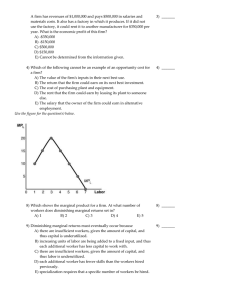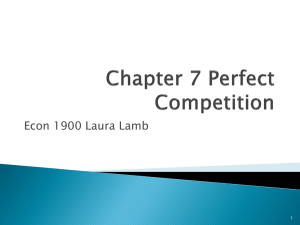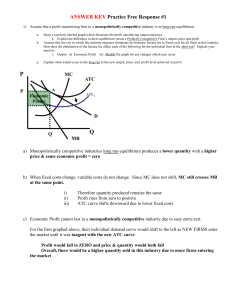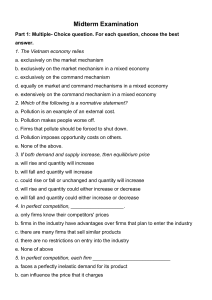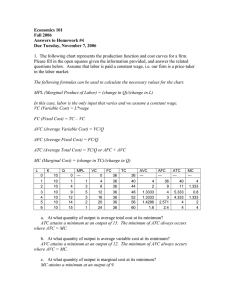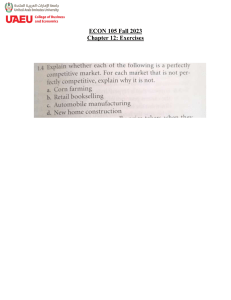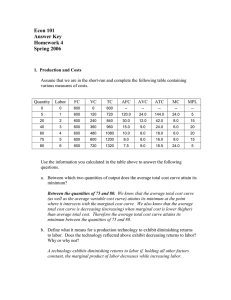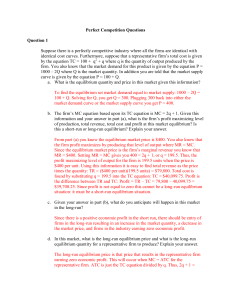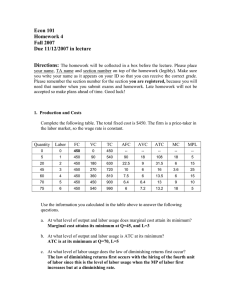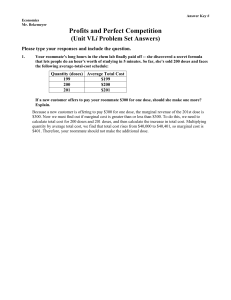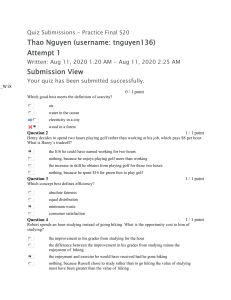Economics 101 Fall 2006 Homework #4 Due Tuesday, November 7, 2006
advertisement
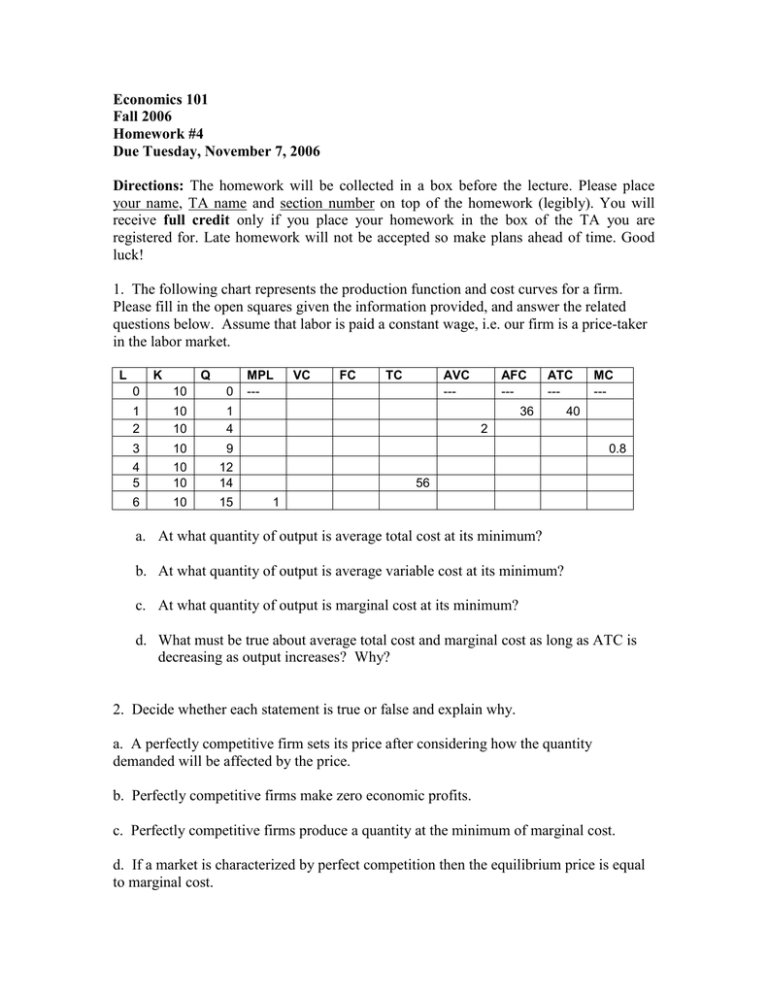
Economics 101 Fall 2006 Homework #4 Due Tuesday, November 7, 2006 Directions: The homework will be collected in a box before the lecture. Please place your name, TA name and section number on top of the homework (legibly). You will receive full credit only if you place your homework in the box of the TA you are registered for. Late homework will not be accepted so make plans ahead of time. Good luck! 1. The following chart represents the production function and cost curves for a firm. Please fill in the open squares given the information provided, and answer the related questions below. Assume that labor is paid a constant wage, i.e. our firm is a price-taker in the labor market. L K Q 0 10 0 1 2 10 10 1 4 3 4 5 10 10 10 9 12 14 6 10 15 MPL --- VC FC TC AVC --- AFC --- ATC --- 36 MC --- 40 2 0.8 56 1 a. At what quantity of output is average total cost at its minimum? b. At what quantity of output is average variable cost at its minimum? c. At what quantity of output is marginal cost at its minimum? d. What must be true about average total cost and marginal cost as long as ATC is decreasing as output increases? Why? 2. Decide whether each statement is true or false and explain why. a. A perfectly competitive firm sets its price after considering how the quantity demanded will be affected by the price. b. Perfectly competitive firms make zero economic profits. c. Perfectly competitive firms produce a quantity at the minimum of marginal cost. d. If a market is characterized by perfect competition then the equilibrium price is equal to marginal cost. 3. The market for bobble-head dolls is characterized by perfect competition. This characterization implies that firms and consumers are price-takers. Furthermore, there is free entry and exit into the market in the long run and all firms are identical in terms of their technological capabilities. Thus the cost function as given below for a representative firm can be assumed to be the cost function faced by each firm in the industry. TC = Qs2 + 10Qs + 100 MC = 2Qs + 10 Aggregate demand in this market is given by P = 1000 – Qd a. What will be the equilibrium price in this market? b. What will be the output of each firm? c. How many firms will exist in the long-run? Now, suppose that the popularity of bobble-head dolls falls. d. In the short-run will the firms in the market earn profits, earn losses, or break even? Why? e. In the long-run will the number of firms in the market increase or decrease? f. What will be the long-run equilibrium price now? (Hint: You don’t need that new demand curve to answer these questions.) Consider an alternative scenario where the technology available for producing bobblehead dolls improves. This causes a change in the cost functions. The new cost functions are given by, TC = Qs2 + 5Qs + 100 MC = 2Qs + 5 g. What will be the new equilibrium price? h. How much will each firm produce?




